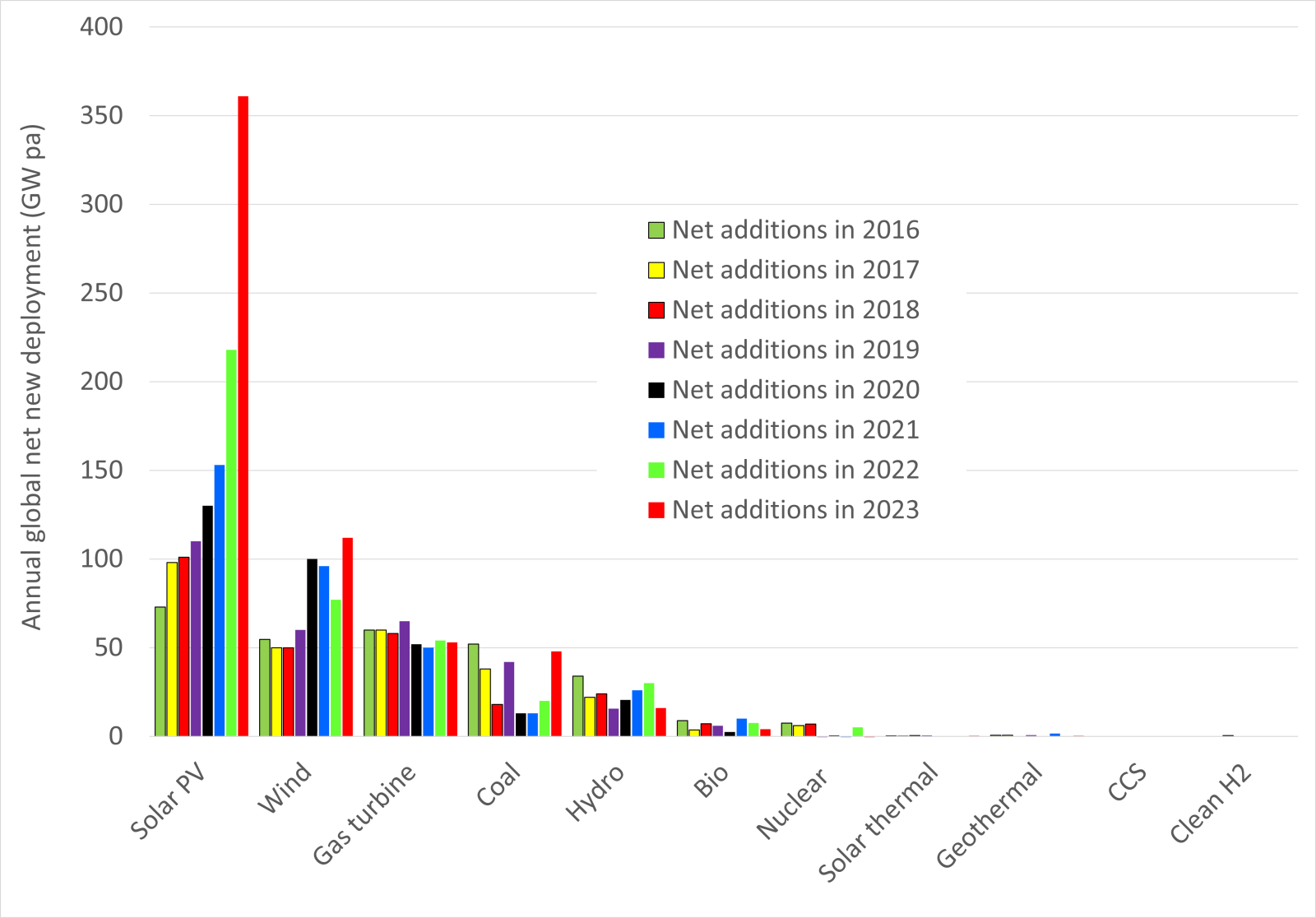The fastest energy change in history is underway. In 2023, solar photovoltaics and wind comprised about 80% of global net generation capacity additions (Figure 1). Twice as much new solar electricity generation capacity was installed in 2023 as everything else combined (wind, gas, coal, hydro, nuclear and others).
Solar is now real energy. Alternative energy now means anything but solar.
Figure 1: global net capacity additions 2016-23 (IRENA, IEA, GEM)
Cumulative global solar capacity passed 1.4 Terawatts (TW), which is tenfold larger than ten years ago, and it is doubling every 3 years. At current growth rates, global solar capacity will pass 7 TW in 2030, and there will be more solar generation capacity than everything else combined. New solar capacity is being installed much faster than anything else in history. This constitutes compelling market-based evidence that solar and wind are the best options for new generation capacity. Construction activities and supply chains for other generation technologies are now far smaller than for solar – compared with solar they are cottage industries. Magical growth rates are required for any other technology to catch up with solar before mid-century.
“Electrification of everything” allows solar to displace fossil fuel from most functions via electric vehicles, electric heat pumps, electric furnaces, and electrolysis of water to produce hydrogen for chemicals (reduction of metal oxides, ammonia, plastics, synthetic jet and shipping fuels).
European countries and Australia lead in terms of watts per person of solar & wind (Figure 2). Unlike European countries, Australia is physically isolated and must go it alone. Its turned out to be remarkably straightforward. Australia is currently at 40% renewables and will be at 82% in 2030. Prices and electricity emissions are falling and the grid is very stable.
Also included in the figure is global nuclear capacity – which has been static for the past dozen years. Nuclear has failed in the global energy marketplace.













